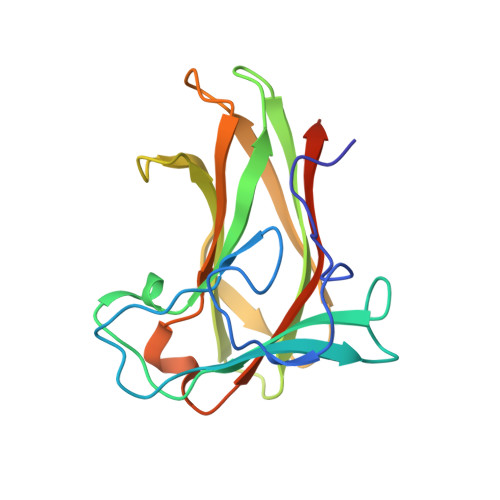Carbohydrate Binding Module Recognition of Xyloglucan Defined by Polar Contacts with Branching Xyloses and Ch-Pi Interactions.
von Schantz, L., Hakansson, M., Logan, D.T., Nordberg-Karlsson, E., Ohlin, M.(2014) Proteins 82: 3466
- PubMed: 25302425
- DOI: https://doi.org/10.1002/prot.24700
- Primary Citation of Related Structures:
4BJ0 - PubMed Abstract:
Engineering of novel carbohydrate-binding proteins that can be utilized in various biochemical and biotechnical applications would benefit from a deeper understanding of the biochemical interactions that determine protein-carbohydrate specificity. In an effort to understand further the basis for specificity we present the crystal structure of the multi-specific carbohydrate-binding module (CBM) X-2 L110F bound to a branched oligomer of xyloglucan (XXXG). X-2 L110F is an engineered CBM that can recognize xyloglucan, xylans and β-glucans. The structural observations of the present study compared with previously reported structures of X-2 L110F in complex with linear oligomers, show that the π-surface of a phenylalanine, F110, allows for interactions with hydrogen atoms on both linear (xylopentaose and cellopentaose) and branched ligands (XXXG). Furthermore, X-2 L110F is shown to have a relatively flexible binding cleft, as illustrated in binding to XXXG. This branched ligand requires a set of reorientations of protein side chains Q72, N31, and R142, although these residues have previously been determined as important for binding to xylose oligomers by mediating polar contacts. The loss of these polar contacts is compensated for in binding to XXXG by polar interactions mediated by other protein residues, T74, R115, and Y149, which interact mainly with the branching xyloses of the xyloglucan oligomer. Taken together, the present study illustrates in structural detail how CH-π interactions can influence binding specificity and that flexibility is a key feature for the multi-specificity displayed by X-2 L110F, allowing for the accommodation of branched ligands.
- Department of Immunotechnology, Lund University, Medicon Village, SE-223 81 Lund, Sweden.
Organizational Affiliation:



















